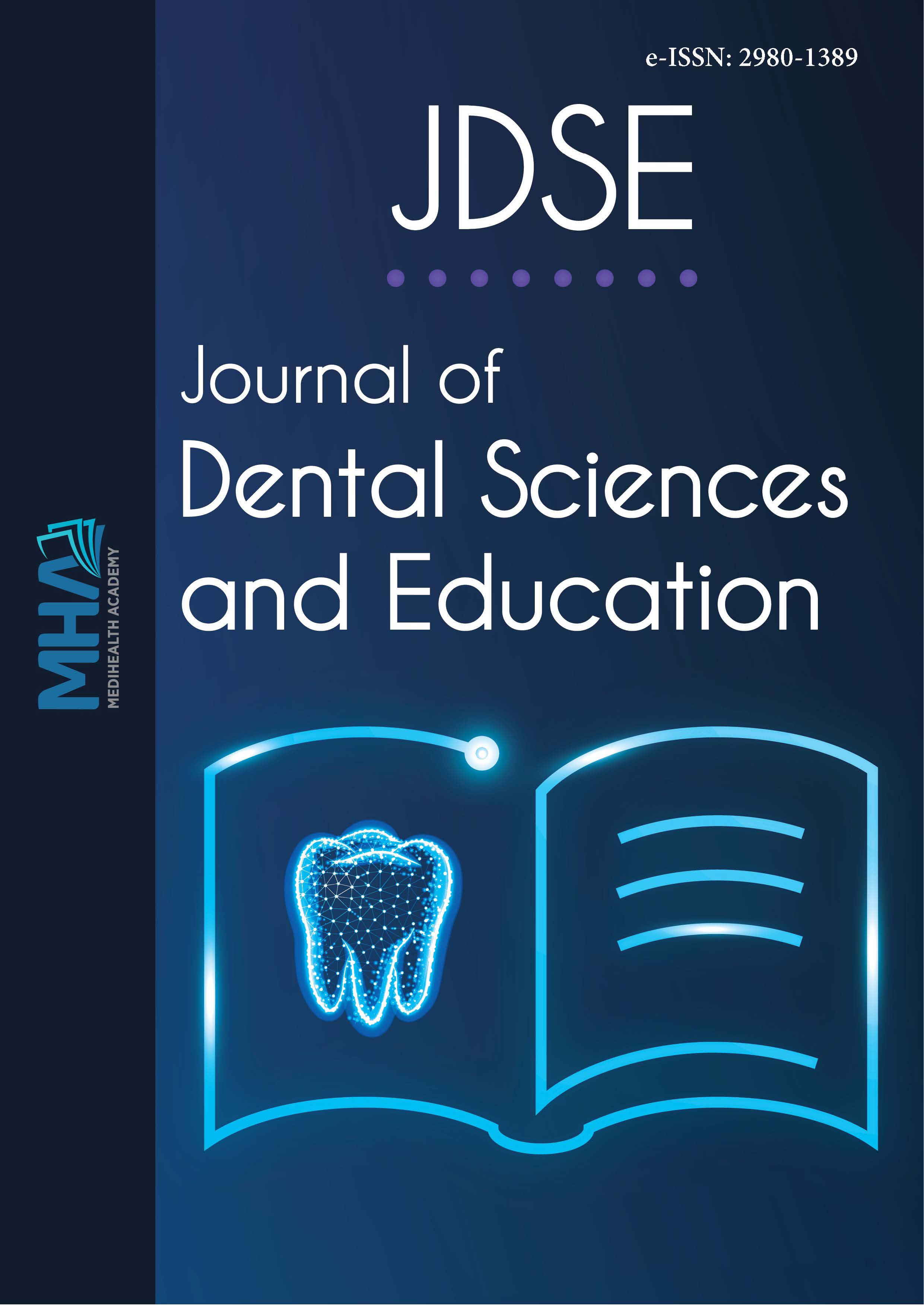1. Ma J, Shen Y, Stojicic S, Haapasalo M. Biocompatibility of two novelroot repair materials. J Endod. 2011;37(6):793-8.
2. Ree M, Schwartz R. Clinical applications of bioceramics materials inendodontics. Endod Pract. 2014;7:32-40.
3. Debelian G, Trope M. The use of premixed bioceramic materials inendodontics. G Ital Endod. 2016;30(2):70-80.
4. Loushine BA, Bryan TE, Looney SW, et al. Setting properties andcytotoxicity evaluation of a premixed bioceramic root canal sealer. JEndod. 2011;37(5):673-7.
5. Koch K, Brave D. The increased use of bioceramics in endodontics.Dentaltown. 2009;10:39-43.
6. Nekoofar MH, Stone DF, Dummer PMH. The effect of bloodcontamination on the compressive strength and surface microstructureof mineral trioxide aggregate. Int Endod. 2010;43(9):782-91.
7. Parirokh M, Torabinejad M. Calcium Silicate-Based Cements. In:Mineral Trioxide Aggregate: Properties and Clinical Applications.2014.p.281.
8. de Miranda Candeiro GT, Correia FC, Duarte MAH, Ribeiro-SiqueiraDC, Gavini G. Evaluation of radiopacity, pH, release of calcium ions,and flow of a bioceramic root canal sealer. J Endod. 2012;38(6):842-5.
9. Koch K, Brave D, Nasseh AA. A review of bioceramic technology inendodontics. CE article. 2012;4:6-12.
10. Damas BA, Wheater MA, Bringas JS, Hoen MM. Cytotoxicitycomparison of mineral trioxide aggregates and EndoSequencebioceramic root repair materials. J Endod. 2011;37(3):372-5.
11. Walsh RM, Woodmansey KF, Glickman GN, He J. Evaluation ofcompressive strength of hydraulic silicate-based root-end fillingmaterials. J Endod. 2014;40(7):969-72.
12. Zhou H-m, Shen Y, Zheng W, Li L, Zheng Y-f, Haapasalo M. Physicalproperties of 5 root canal sealers. J Endod. 2013;39(10):1281-6.
13. Nair U, Ghattas S, Saber M, Natera M, Walker C, Pileggi R.A comparative evaluation of the sealing ability of 2 root-endfilling materials: an in vitro leakage study using Enterococcusfaecalis. Oral Surg Oral Med Oral Pathol Oral Radiol Endodontol.2011;112(2):e74-e7.
14. Shokouhinejad N, Gorjestani H, Nasseh AA, Hoseini A, MohammadiM, Shamshiri AR. Push-out bond strength of gutta-percha with a newbioceramic sealer in the presence or absence of smear layer. Aust EndodJ. 2013;39(3):102-6.
15. Lovato KF, Sedgley CM. Antibacterial activity of endosequenceroot repair material and proroot MTA against clinical isolates ofEnterococcus faecalis. J Endod. 2011;37(11):1542-6.
16. İpek İ, Ünal M, Güner A, Candan M. Push-out bond strength ofBiodentine, MTA repair HP, and a new pre-mixed NeoPutty bioactivecement: scanning electron microscopy energy dispersive X-rayspectroscopy analysis. J Aust Ceram Soc. 2022;58(1):171-9.
17. Sun Q, Meng M, Steed JN, Sidow SJ, Bergeron BE, Niu L-n, et al.Manoeuvrability and biocompatibility of endodontic tricalciumsilicate-based putties. J Dent. 2021;104:103530.
18. Özata MY, Falakaloğlu S, Plotino G, Adıgüzel Ö. The micro-shear bondstrength of new endodontic tricalcium silicate-based putty: An in vitrostudy. Aust Endod J. 2022. https://doi.org/10.1111/aej.12631
19. NuSmile. Available at: https://www.nusmile.com/NeoPutty/Technical-Support.
20. Benetti F, Queiroz ÍOdA, Cosme-Silva L, Conti LC, Oliveira SHPd,Cintra LTA. Cytotoxicity, biocompatibility and biomineralization of anew ready-for-use bioceramic repair material. Braz Dent J. 2019;30:325-32.
21. Rodríguez-Lozano FJ, López-García S, García-Bernal D, et al. Invitro effect of putty calcium silicate materials on human periodontalligament stem cells. Appl Sci. 2020;10(1):325.
22. Bio-C Repair. Available at: https://angelus.ind.br/produto/bio-c-repair/?lang=en.
23. Toubes KSd, Tonelli SQ, Girelli CFM, et al. Bio-C repair-a newbioceramic material for root perforation management: two case reports.Braz Dent J. 2021;32:104-10.
24. Lertmalapong P, Jantarat J, Srisatjaluk RL, Komoltri C. Bacterialleakage and marginal adaptation of various bioceramics as apical plugin open apex model. J iInvest Clin Dent. 2019;10(1):e12371.
25. Raju N, Kumar PS, Jayashankara C, Girish S. A study to evaluate andcompare the apical sealing ability of MTA, Biodentine, and TotalFillBC RRM Putty in simulated immature teeth. Int J Prev Clin Dent Res.2022;9(1):1-4.
26. Zamparini F, Siboni F, Prati C, Taddei P, Gandolfi MG. Propertiesof calcium silicate-monobasic calcium phosphate materials forendodontics containing tantalum pentoxide and zirconium oxide. ClinOral Invest. 2019;23(1):445-57.
27. TotalFill BC RRM. Available at : http://busadental.com/wp-content/uploads/sites/15/2015/05/IFU-0023-TotalFill-RRM-IFU-REV-A1.pdf.
28. Bayraktar K, Basturk FB, Turkaydin D, Gunday M. Long-term effectof acidic pH on the surface microhardness of ProRoot mineral trioxideaggregate, Biodentine, and total fill root repair material putty. Dent ResJ. 2021;18(2).
29. Motwani N, Ikhar A, Nikhade P, et al. Premixed bioceramics: A novelpulp capping agent. J Conserv Dent. 2021;24(2):124-9.
30. Dou L, Yan Q, Yang D. Effect of five dental pulp capping agents on cellproliferation, viability, apoptosis and mineralization of human dentalpulp cells. Experiment Therapeutic Med. 2020;19(3):2377-83.
31. Öncel Torun Z, Torun D, Demirkaya K, et al. Effects of iR oot BP andwhite mineral trioxide aggregate on cell viability and the expression ofgenes associated with mineralization. Int Endod J. 2015;48(10):986-93.
32. ElReash AA, Hamama H, Eldars W, Lingwei G, Zaen El-Din AM, XiaoliX. Antimicrobial activity and pH measurement of calcium silicatecements versus new bioactive resin composite restorative material.BMC Oral Health. 2019;19(1):1-10.

